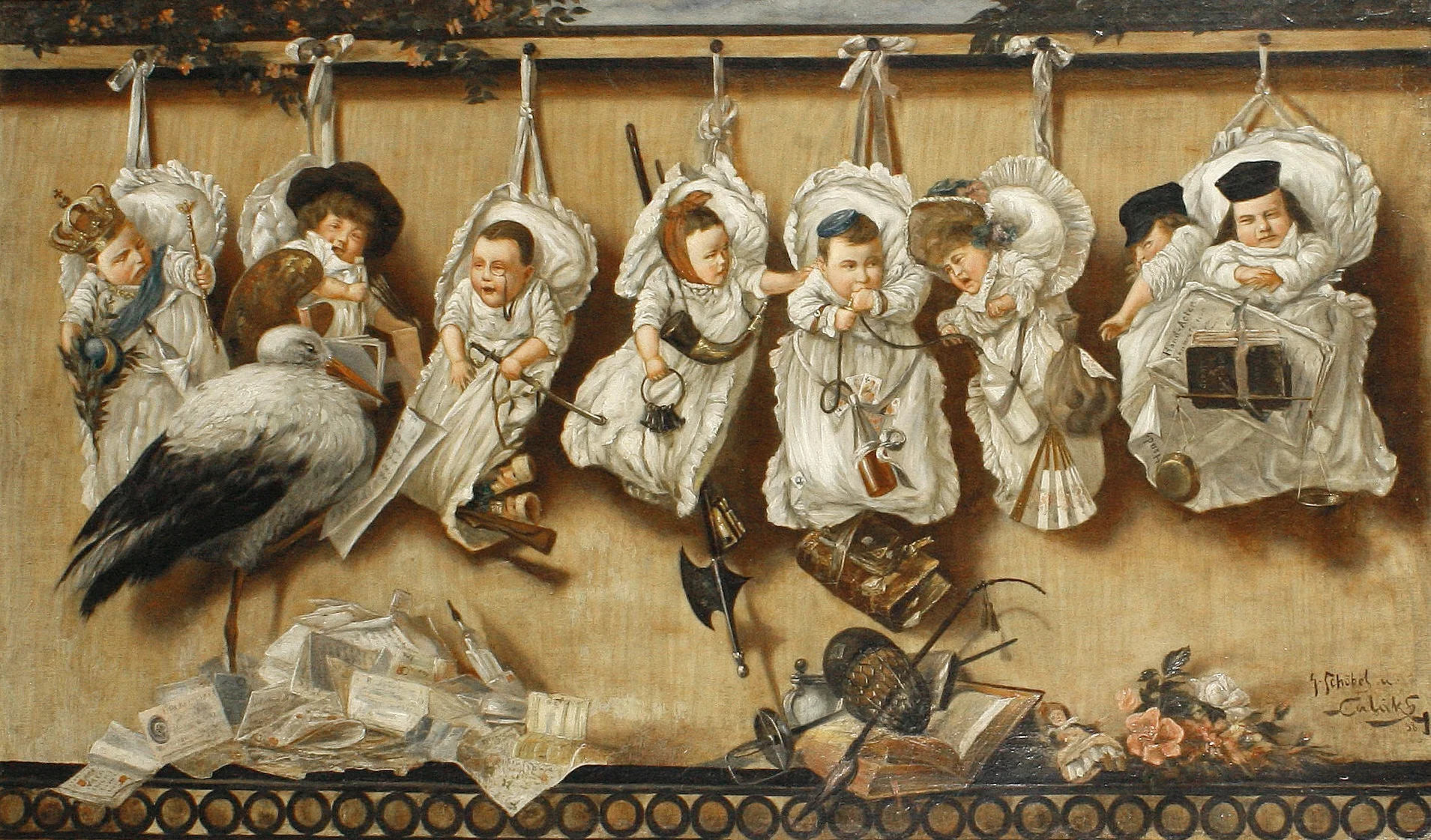Allegory of Destiny
By Georg Schöbel

Georg Schoebel. Allegory of Fate. 1898/Wikimedia Commons
The painting is in a private collection
Is this canvas by the German artist Georg Schöbel a masterpiece of world art? The answer is no. Schöbel was a solid craftsman with a brush, and his paintings sold fairly well, but he did not strive for more. He was a book illustrator and a quite prolific painter in addition, primarily depicting battle scenes and historical canvases that still sell well at auctions today. However, this particular work was undoubtedly successful, thanks mainly to its subject matter, which is unexpectedly ironic and somewhat satirical for this author.
This painting is an interesting one to observe. On the left side of the canvas, we see a stork thoughtfully looking at yet another written request from a parent, holding the sheet of paper in its foot. Naturally, all parents want a child from their top three choices, and hence the pile of letters lying beneath the firstborns.
The first child, wearing a crown and holding a scepter and orb, is endowed with power. Its facial features are recognizably Napoleon’s, suggesting that even ordinary mortals, not clad in purple, could hope to have a future ruler born into their family. Greatness overwhelms the little one to such an extent that he does not even rejoice in his exceptional destiny; his thoughts are consumed by the fate of the world.
The second child in this trio of Fate’s favorites is the Muse's pet, creativity himself, with a palette, sketchbook, and books by his side. He joyfully smiles at the stork, who is ready to lead him to happiness and glory.
The third child, as cheerful and happy as the artist himself, represents strength. A joyous officer in his parade uniform, with sabers, toy soldiers, a monocle, and slicked down hair, he is the future soul of all the secular salons, an enviable groom and collector of awards.
The next trio begins with a servant of the law. A bugle, a night watchman's lantern, a halberd, and the keys to a dungeon are depicted near him. His hand rests firmly on the shoulder of a future criminal, who simultaneously drinks something (that is definitely not milk) from his own bottle and manages to get close to his neighbor's milk. The story of this figure is simple and understandable—books and a student duelist's sword i
The only girl in the painting is surrounded by dolls, flowers, fans, and hats. Her carefree future is ensured by a large purse filled with coins in pouches, but she will clearly become an easy target for fraudsters, which is why she is crying.
The last two are twins. The twin on the right , wearing the hat of a member of the imperial court, peacefully folds his hands on his belly above a thick Talmud of decrees. The scales of justice show an empty cup on his twin brother's side, who is wearing a peaked cap. Destiny has deprived this infant; he has nothing at all. His chubby brother almost pushes him out of their swaddling clothes, and so the destitute one's hand instinctively reaches for the purse temptingly hanging from the belt of the neighboring girl.
To reiterate, An Allegory of Destiny is not a dazzling diamond in the treasury of world art, but its melancholic humor and undeniably fascinating elements have made it the most famous painting by Schöbel.

Georg Schoebel. Allegory of Fate. 1898/Wikimedia Commons



